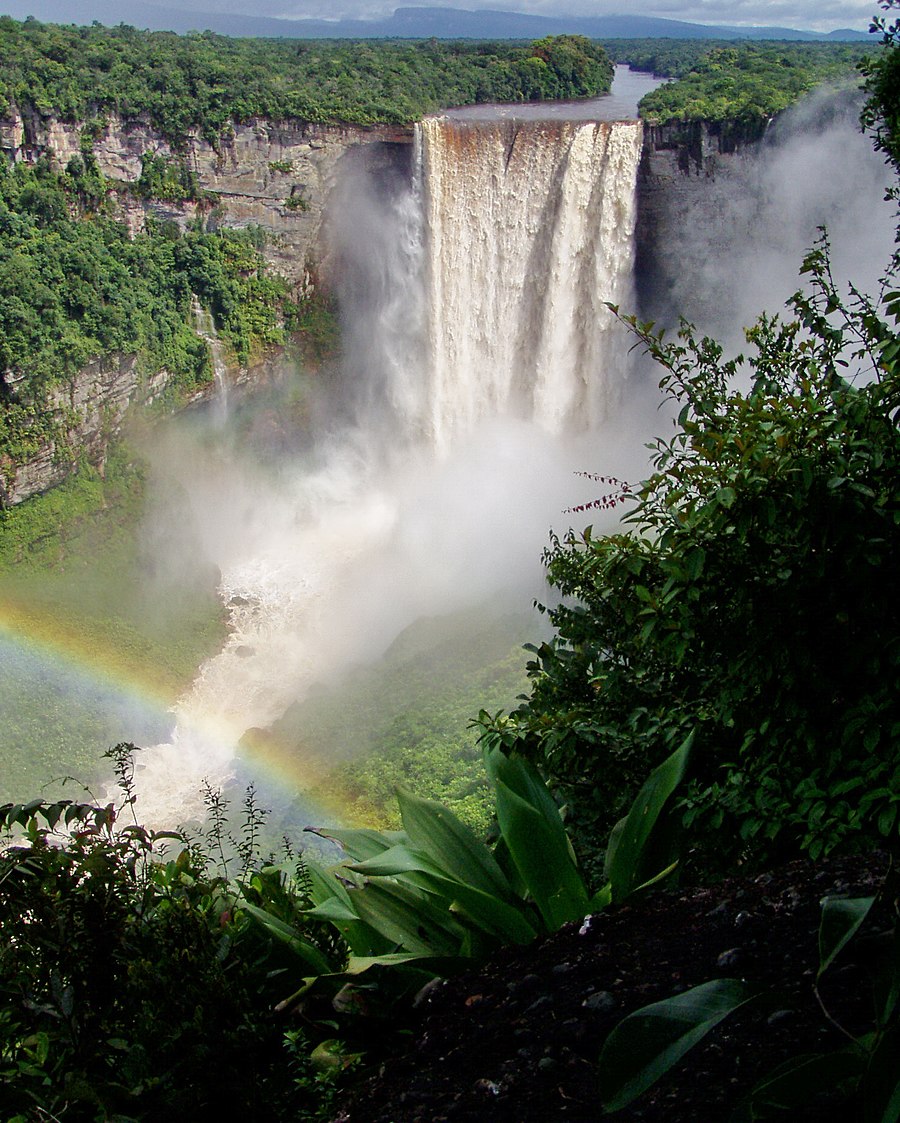Type Plunge Average width 371 feet/113 metres Height 226 m Longest drop 226 m | Total height 741 feet/226 metres World height ranking 123 Elevation 482 m Number of drops 1 | |
 | ||
Averageflow rate 23,400 cu ft/s (660 m/s) Similar Kaieteur National Park, Angel Falls, Orinduik Falls, Iwokrama Forest, Sutherland Falls | ||
The mighty kaieteur falls like you have never seen it before
Kaieteur Falls is the world's largest single drop waterfall by the volume of water flowing over it. Located on the Potaro River in the Kaieteur National Park, it sits in a section of the Amazon rainforest included in the Potaro-Siparuni region of Guyana and claimed by Venezuela as Guayana Esequiba. It is 226 metres (741 ft) high when measured from its plunge over a sandstone and conglomerate cliff to the first break. It then flows over a series of steep cascades that, when included in the measurements, bring the total height to 251 metres (822 ft). While many falls have greater height, few have the combination of height and water volume, and Kaieteur is among the most powerful waterfalls in the world with an average flow rate of 663 cubic metres per second (23,400 cubic feet per second).
Contents
- The mighty kaieteur falls like you have never seen it before
- Kaieteur falls guyana take off with captain john
- Discovery
- Tourism
- Popular culture
- References
Kaieteur Falls is about four times higher than Niagara Falls, on the border between Canada and the United States, and about twice the height of Victoria Falls, on the border of Zambia and Zimbabwe in Africa. It is a single drop waterfall.
Upriver from the falls, the Potaro Plateau stretches out to the distant escarpment of the Pakaraima Mountains. The Potaro River empties into the Essequibo River which is one of the longest and widest rivers in South America and the longest river in Guyana.
Kaieteur falls guyana take off with captain john
Discovery
The falls were discovered in 1870 by a party led by Charles Barrington Brown, a pair of British geologists appointed as government surveyors to the colony of British Guiana. Brown and his partner James Sawkins had arrived in Georgetown in 1867, and while they did some of their mapping and preparation of geological reports together, some work was performed in separate expeditions, and Sawkins was taking a break from his work at the time of Brown's discovery of Kaieteur. At this point, Brown did not have time to investigate Kaieteur Falls closer, so he returned one year later to make comprehensive measurements.
Brown’s book Canoe and Camp life in British Guiana was published in 1876. Two years later, in 1878, he published Fifteen Thousand Miles on the Amazon and its tributaries.
According to a Patamona Indian legend, Kaieteur Falls was named for Kai, a chief, or Toshao who acted to save his people by paddling over the falls in an act of self-sacrifice to Makonaima, the great spirit.
Another legend though was told to Brown by Amerindians in the night of discovery of falls: Kaieteur has been named after an unpleasant old man who was placed in a boat and shoved in the fall by his relatives. Thus the fall was named "Kaieteur" what means - "old-man-fall".
Tourism
Kaieteur Falls is a major tourist attraction in Guyana. The falls is located in Kaieteur National Park and is in the center of Guyana's rainforest. There are frequent flights between the falls airstrip and Ogle Airport and Cheddi Jagan International Airport in Georgetown.
Kaieteur Airstrip is located at Kaieteur, about a 15 minute walk from the top of Kaieteur falls. The Kaieteur airstrip serves the Kaieteur National Park.
Popular culture
Kaieteur Falls is featured in:
